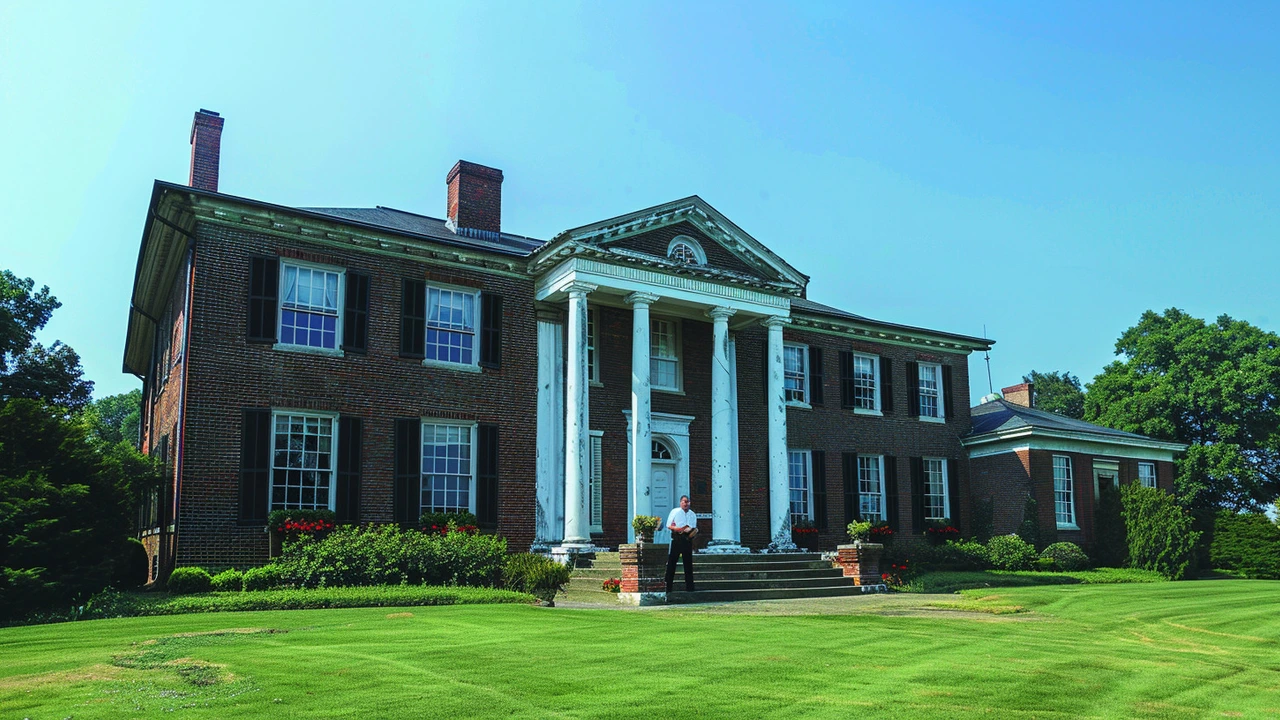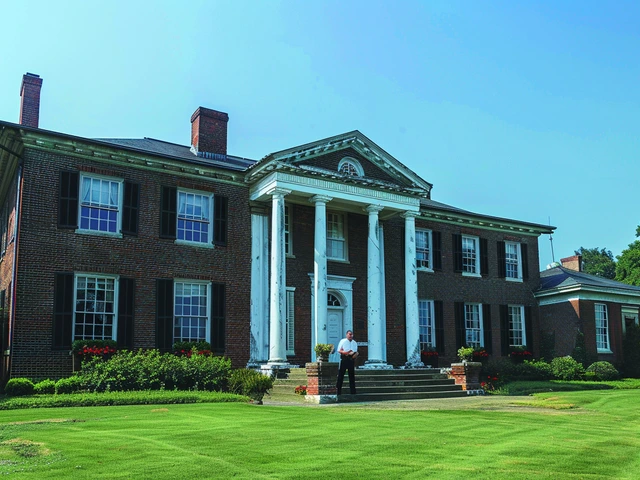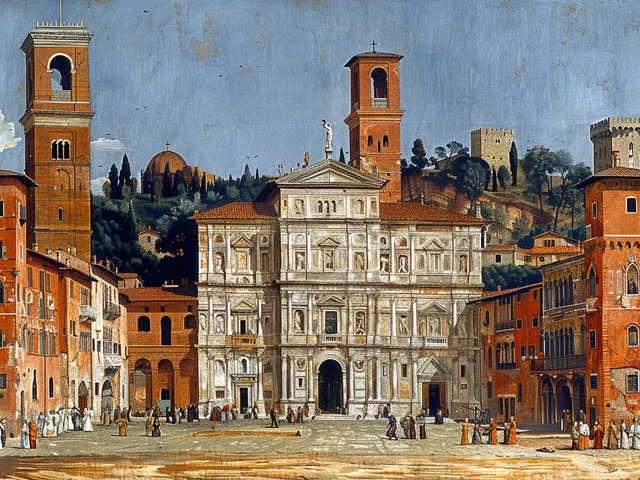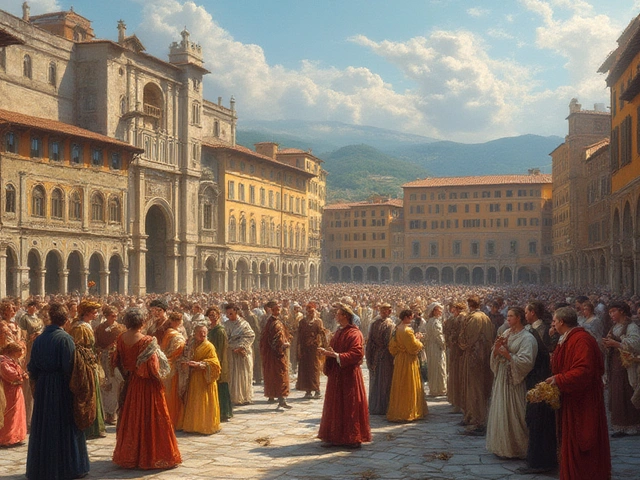In the heart of historical architecture lies the magnificent Federal style, which blossomed in the United States between 1780 and 1840. This period of design speaks volumes about the era's quests for refinement and simplicity.
Influenced heavily by the Roman classicism that inspired the founders of the American republic, Federal architecture radiates elegance and symmetry with a touch of boldness that defined early American society.
Let's embark on a journey to uncover the fundamentals of Federal architecture, delve into its unique features, celebrate the masterminds behind the style, and explore some of the finest examples of this architectural gem found across America.
- Understanding Federal Architecture
- Recognizable Features of Federal Style
- Influential Architects and Their Contributions
- Notable Federal Architecture Buildings
Understanding Federal Architecture
The Federal style of architecture holds a special place in the architectural history of the United States. Originating in the period after the American Revolution, roughly between 1780 and 1840, the style is synonymous with the aspirations of a young nation seeking its own identity distinct from its European roots. Federal architecture signifies a refined, neoclassical departure from the more robust Georgian style that preceded it.
Federal architecture is characterized by its symmetry, geometric shapes, and restrained decorative elements. Unlike the ornate and elaborate designs seen in the Georgian style, the Federal style seeks a more modest and sophisticated appearance using influences from ancient Roman and Greek architecture. Central to its design are plain surfaces with minimal ornamentation, elliptical fanlights over doors, and understated use of motifs such as swags, garlands, and oval shapes. These elements reflect the era's focus on balanced proportions and clear, unadorned lines.
Their interiors are no less impressive. Hallmarks of the Federal style inside homes and public buildings include intricate plasterwork, dado rails, and well-crafted wooden panels. It's a blend that speaks of elegance matched with functionality. Often, chimneys are concealed within the walls, showing the early beginnings of modern heating solutions. Remarkably, one can walk into a Federal-style building today and still sense how these structures met both the aesthetic and practical needs of their time.
A significant factor in the style's popularity was its endorsement by influential figures of the era. Thomas Jefferson himself was a proponent of neoclassical architecture, which heavily influenced the Federal style. He believed that architecture could shape the civic virtues of a new nation. His retreat, Monticello, although not purely Federal in style, embodies the principles of symmetry and classical order that Federal architecture champions. Talking about the period, Jefferson once noted, "Architecture is the truest expression of a culture's soul."
The Federal period also saw the emergence of several notable architects who left a lasting impact. One such figure was Charles Bulfinch, who designed many prominent buildings in Boston, including the Massachusetts State House. Bulfinch’s works are characterized by simplicity and elegance, staying true to Federal principles while leaving a distinctive mark on American cities.
Another key architect from the Federal era was Benjamin Henry Latrobe, often credited as the father of American architecture. His works include the design of the United States Capitol's original interiors and the Baltimore Basilica. Latrobe’s influence stretched beyond individual structures; his designs helped set the architectural tone for public buildings in the nascent republic.
Understanding Federal architecture involves not just recognizing its aesthetic traits but also appreciating the cultural and historical context in which it developed. It was a style that symbolized the newfound independence of a young America and its aspiration towards democratic ideals rooted in classical antiquity. By studying and preserving these structures, we keep alive a significant chapter of architectural history.
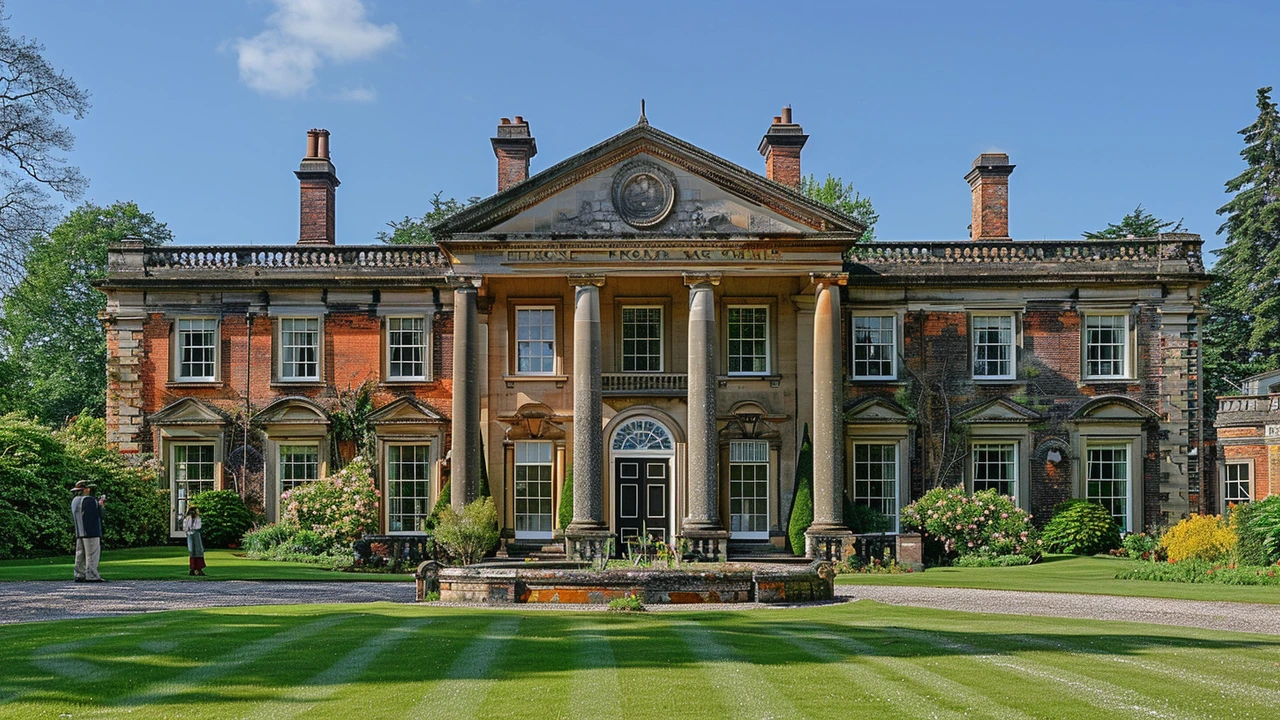
Recognizable Features of Federal Style
Federal architecture boasts an array of distinct features that make it an enduring favorite among history buffs. One of the most notable characteristics lies in its use of symmetry and proportion, hallmarks of the classical Roman influences that shaped this style. Federal homes often feature a rectangular box form, with the placement of windows and doors adhering to a balanced, symmetrical design. This creates a harmonious and understated elegance that appeals to many.
The facades of Federal-style buildings frequently include decorative elements like fanlights and sidelights adjacent to the main door. These fanlights are semi-circular or elliptical windows that sit prettily above the entrance, allowing more light into the entryway and adding a touch of refinement. Another key feature is the presence of tall, narrow windows, often arranged in pairs, which add to the building’s sense of verticality and grace.
Ornamentation is usually detailed but restrained, with motifs such as swags, garlands, and urns. These decorations are typically found carved into wood or stone around doorways, windows, and rooflines. The style also flaunts intricately designed cornices and moldings that line the edges of roofs and walls, providing both a functional and aesthetic appeal.
Chimneys in Federal architecture play a more background role but are usually placed symmetrically at the ends of the building. This not only enhanced the building’s symmetrical appearance but also served the practical function of heating the house evenly during cold winters.
According to the Historic New England organization, "Federal architecture reflects the aspirations of a young nation striving for cultural and aesthetic parity with Europe, symbolizing a longing for order, balance, and beauty."
Materials used in Federal buildings also played a role in their recognizable style. Builders frequently employed brick, stone, and wood, with brick being the most common in urban areas. This choice of materials not only provided durability but also contributed to the stately and refined look of Federal buildings.
Interiors of Federal buildings were just as thoughtfully designed. Rooms often included delicately crafted woodwork, from chair rails to wainscoting. Fireplaces, central to the home for both heat and cooking, were adorned with elegant mantels featuring neoclassical design elements. Floors were commonly made from wide wooden planks, stained or painted to enhance their beauty and durability.
In essence, recognizing a Federal-style building might involve looking for these key features: symmetry in design, decorative yet restrained elements like fanlights and urns, tall narrow windows, and use of durable materials like brick. Federal architecture captures a unique blend of modesty and elegance, a testament to the young nation's ideals of beauty and order in its formative years.
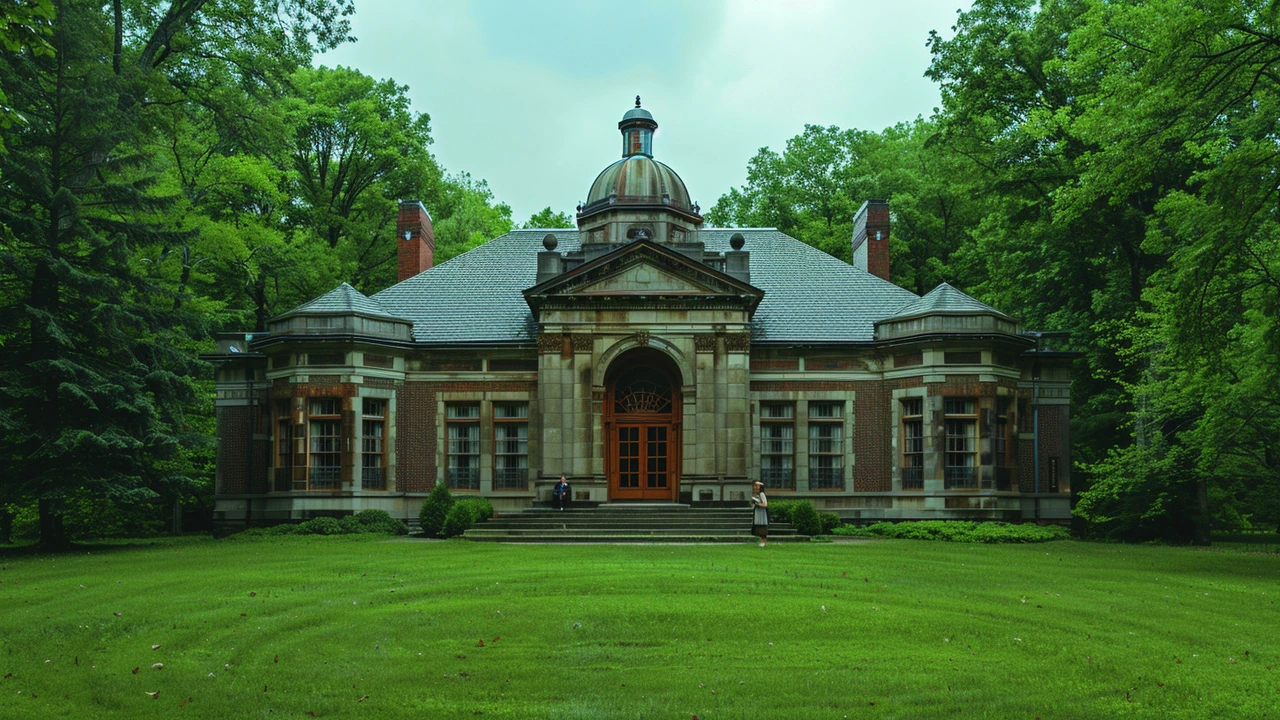
Influential Architects and Their Contributions
The Federal style of architecture owes its refined elegance to several key architects whose innovative vision and skill left an indelible mark on America’s architectural landscape. A pivotal figure among them was Charles Bulfinch, often credited with introducing Federal architecture to the United States. Bulfinch's designs emphasized symmetry, proportion, and the use of light and shadow to create visual interest. His works include the Massachusetts State House and the University Hall at Harvard, both exemplifying his masterful grasp of the style.
Another notable architect was Benjamin Henry Latrobe, often considered the father of American architecture. He brought a sophisticated understanding of classical principles combined with practical American sensibilities. His contributions to the United States Capitol building in Washington D.C. are monumental. Latrobe’s innovative use of materials and space set a precedent for future American architecture. His design for the Baltimore Basilica remains a stunning example of Federal style's union of beauty and functionality.
Whether by design or stroke of genius, Samuel McIntire of Salem, Massachusetts, also carved his niche in Federal architecture. McIntire, a self-taught architect and woodcarver, infused a level of craftsmanship in his work which is highly regarded. His noteworthy projects, including the Peirce-Nichols House and the Hamilton Hall, display a delicate balance of decorative elements and structural clarity. McIntire's use of intricate woodwork and his talent for integrating art into architecture makes his work a tangible piece of history.
Additionally, the White House owes its iconic status to Irish-born architect James Hoban. Selected through a competition initiated by President George Washington, Hoban's design was inspired by the Leinster House in Dublin. He created a stately yet functional residence that has become a symbol of American governance. Hoban's influence extends to other significant structures, fulfilling an essential role in the architectural narrative of the young nation.
Reflecting on these architects’ work, it is clear how the Federal style encapsulates early America's aspirations. Their structures don’t just stand as buildings; they embody a narrative of striving for harmony, order, and a uniquely American identity grounded in classical traditions. Visitors and history enthusiasts can witness firsthand the creativity and dedication etched in stone, brick, and wood, serving as a testament to the enduring legacy of these visionaries.

Notable Federal Architecture Buildings
Federal Architecture is peppered across the United States, from coastal towns to bustling cities, showcasing a timeline of the country’s beginnings. The President's House, now known to us as the White House, is one of the primary examples of Federal style. Built between 1792 and 1800, its design provides a perfect union of British influences and the ideals of the new nation. The White House displays symmetry, simple geometry, and elements borrowed from classical Roman architecture.
Another gem is the Massachusetts State House in Boston. Designed by the celebrated architect Charles Bulfinch, completed in 1798, it stands out with its prominent golden dome and red brick walls. Bulfinch’s design places a premium on balance and elegance, setting a precedent for many civic structures that followed. The rotunda and intricate interiors provide a rich taste of the Federal style's understated sophistication.
The Stephen Hopkins House in Providence, Rhode Island, though built prior to the Federal era, beautifully embodies the style through updates made during that period. The house’s restrained ornamentation and straightforward design reflect the spirit of Federal Architecture, emphasizing function and simplicity. Historical enthusiasts can explore how the home celebrates the lifestyle and aesthetic transitions of early American society.
“The Federal style of architecture represents a break from the past by embracing simplicity over opulence. It’s an architectural salute to a nation establishing its identity,” says Dr. Margaret Moore, a noted historian specializing in early American architecture.
The Old Town Alexandria in Virginia is another treasure trove for those seeking authentic Federal structures. The Gadsby's Tavern, which now operates as a museum, was a social hub in the late 18th century and continues to attract visitors with its historical masons and well-preserved architecture. Its symmetry and understated elegance perfectly capture the era’s aesthetic.
Moreover, the Gore Place in Waltham, Massachusetts offers a glimpse into the rural elegance of Federal mansions. Built in 1806, this stylish mansion is noted for its outstanding symmetry, ellipsoid rooms, and delicate detailing, providing insights into the residential architecture for the affluent during this period. The estate allows visitors to walk through American history with each room echoing tales of another era.
To experience the Federal style on a smaller, more personal scale, the Octagon House Museum in Washington, D.C. provides a unique dive into residential design. Built in 1801 by Dr. William Thornton, one of the architects behind the U.S. Capitol, the house stands out with its elegant grandeur and unusual octagonal shape. The use of mathematical precision and symmetry in its layout offers a masterclass in Federal design principles.
For those eager to see Federal Architecture's lasting legacy, the Touro Synagogue in Newport, Rhode Island, serves as a religious landmark that intertwines both historical and architectural significance. Completed in 1763, it remains America's oldest standing synagogue and showcases a blend of simple exterior lines with an unexpectedly ornate interior influenced by classical design.

